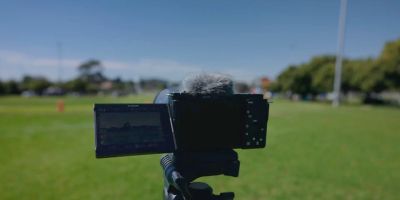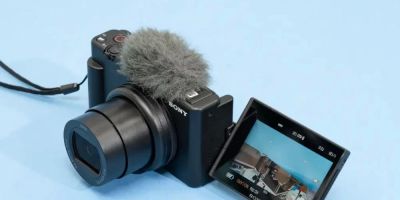Best Photography Gear for Toy Camera Photography
- 1. What is Toy Camera Photography?
- 2. Why Choose Toy Camera Photography?
- 3. Essential Gear for Toy Camera Photography
- 4. Top Toy Cameras for Creative Shoots
- 5. Additional Accessories for Toy Camera Photography
- 6. Tips for Getting the Best Results with Toy Camera Photography
1. What is Toy Camera Photography?
Toy camera photography is a style of photography that uses inexpensive, simple, and often plastic cameras to create images with a nostalgic, lo-fi feel. These cameras, often referred to as “toy cameras,” are known for their quirky, imperfect characteristics. They can produce light leaks, vignettes, and soft focus effects, adding a distinctive charm to the images they capture. The appeal of toy camera photography lies in its unpredictable nature, allowing for a unique artistic expression that digital cameras often can’t replicate.
Some of the most iconic toy cameras include the Lomography cameras, Holga, and Diana, which have a long history in the photography world. Toy camera photography is embraced by photographers who enjoy exploring experimental techniques and creative freedom, producing images that are often more expressive than technically perfect.
2. Why Choose Toy Camera Photography?
There are several reasons why photographers, both hobbyists and professionals, choose toy camera photography:
- Affordability: Toy cameras are generally affordable compared to high-end digital cameras. This makes them an attractive option for those looking to experiment without investing heavily in expensive equipment.
- Creativity and Imperfection: The unpredictable results from a toy camera allow for creative experimentation. The distortion, vignetting, and other imperfections can add a unique, artistic element to the photos.
- Analog Charm: There is a growing appreciation for analog photography, which allows photographers to step away from the perfection of digital images and enjoy the tactile experience of film.
- Simplicity: Toy cameras are often straightforward to use with minimal settings, making them easy for beginners to get started with, while still offering depth for more experienced photographers to explore.
Whether you’re a professional photographer looking for a new creative outlet or a beginner exploring the world of photography, toy cameras offer a fun and affordable way to capture memorable images with a touch of artistic flair.
3. Essential Gear for Toy Camera Photography
When it comes to toy camera photography, the gear is simple, yet effective. While the cameras themselves are crucial, there are a few other pieces of equipment that can help you get the best results from your toy camera photography:
- Toy Camera: The most important piece of equipment. Cameras like the Lomography Diana F+, Holga 120N, and Lomo LC-A are all excellent options that offer a range of creative possibilities. Each camera comes with its own unique set of features, from adjustable exposure settings to wide-angle lenses.
- Film: Toy cameras often use 35mm or 120mm film, depending on the camera. Experimenting with different types of film, such as black and white, color negative, or slide film, can affect the final result of your photos. It's important to choose the right type of film for the effect you want to achieve.
- Light Meters: Some toy cameras may not have built-in light meters. If this is the case, a handheld light meter can help you determine the right exposure settings for your shots, ensuring the best results in various lighting conditions.
While the gear is minimalistic, understanding how each piece works together can elevate your photography and help you get creative with the results.
4. Top Toy Cameras for Creative Shoots
Several toy cameras are favorites among photographers for their unique abilities to create stunning, unconventional images. Here are some of the top choices for creative shoots:
- Lomography Diana F+: Known for its soft focus and vignetted images, the Diana F+ is one of the most iconic toy cameras. Its plastic lens and low-fi qualities make it perfect for capturing dreamy, ethereal photos.
- Holga 120N: The Holga is another favorite for toy camera enthusiasts. It’s famous for its light leaks, unpredictable vignettes, and overall grainy quality. It’s perfect for experimental photography, as it often yields surprises with each shot.
- Lomo LC-A: This compact 35mm camera is known for its high-quality lenses and automatic exposure settings. It’s a favorite for street photographers looking to capture spontaneous, vivid shots with rich color saturation.
Each of these cameras has its own personality, allowing photographers to select the right tool for their creative vision. The best camera depends on the style of photos you’re aiming to create, so don’t hesitate to experiment with different models to find what works best for you.
5. Additional Accessories for Toy Camera Photography
While toy cameras are inherently simple, a few accessories can enhance your creative options and make your experience even more enjoyable:
- Lens Filters: Adding a colored or effect lens filter can drastically change the mood of your photos. Try experimenting with filters to add contrast, adjust colors, or create a vintage look.
- Tripod: A tripod is especially useful for long exposure shots, such as capturing light trails or shooting in low-light conditions. A stable camera setup ensures crisp, clear images.
- Camera Straps: Since toy cameras are often lightweight, having a comfortable, adjustable strap is essential for carrying your camera during shoots. It allows you to keep your hands free while still having easy access to your gear.
These accessories can expand your creative possibilities and help you achieve even more striking and unique images with your toy camera.
6. Tips for Getting the Best Results with Toy Camera Photography
To make the most of your toy camera, here are a few tips to help you achieve the best results:
- Embrace the Imperfections: One of the joys of toy camera photography is the imperfections. Embrace light leaks, vignettes, and soft focus as part of your creative expression.
- Experiment with Double Exposures: Many toy cameras allow for double exposures, where two images are exposed onto the same frame. This technique can create unique, layered effects.
- Use Different Film Stocks: Experiment with different types of film (such as black and white, color negative, or slide film) to create varied effects and styles in your photography.
- Take Your Time: Toy cameras are not for quick snapshots. They require patience and careful thought. Take the time to compose each shot and anticipate the results.
With these tips, you can make the most of your toy camera and create photographs that are full of character and charm. Toy camera photography is all about experimenting, having fun, and expressing your unique vision.





